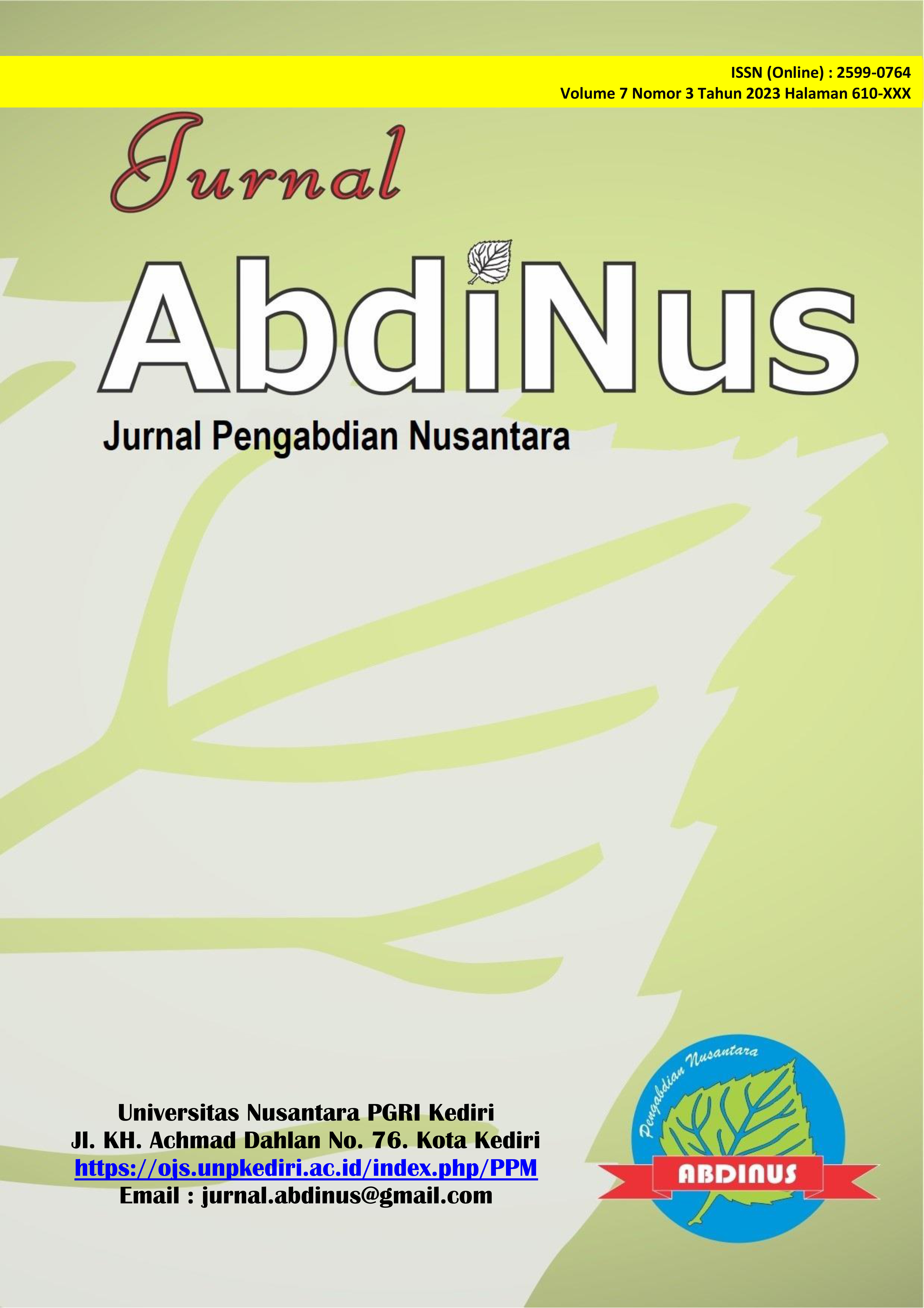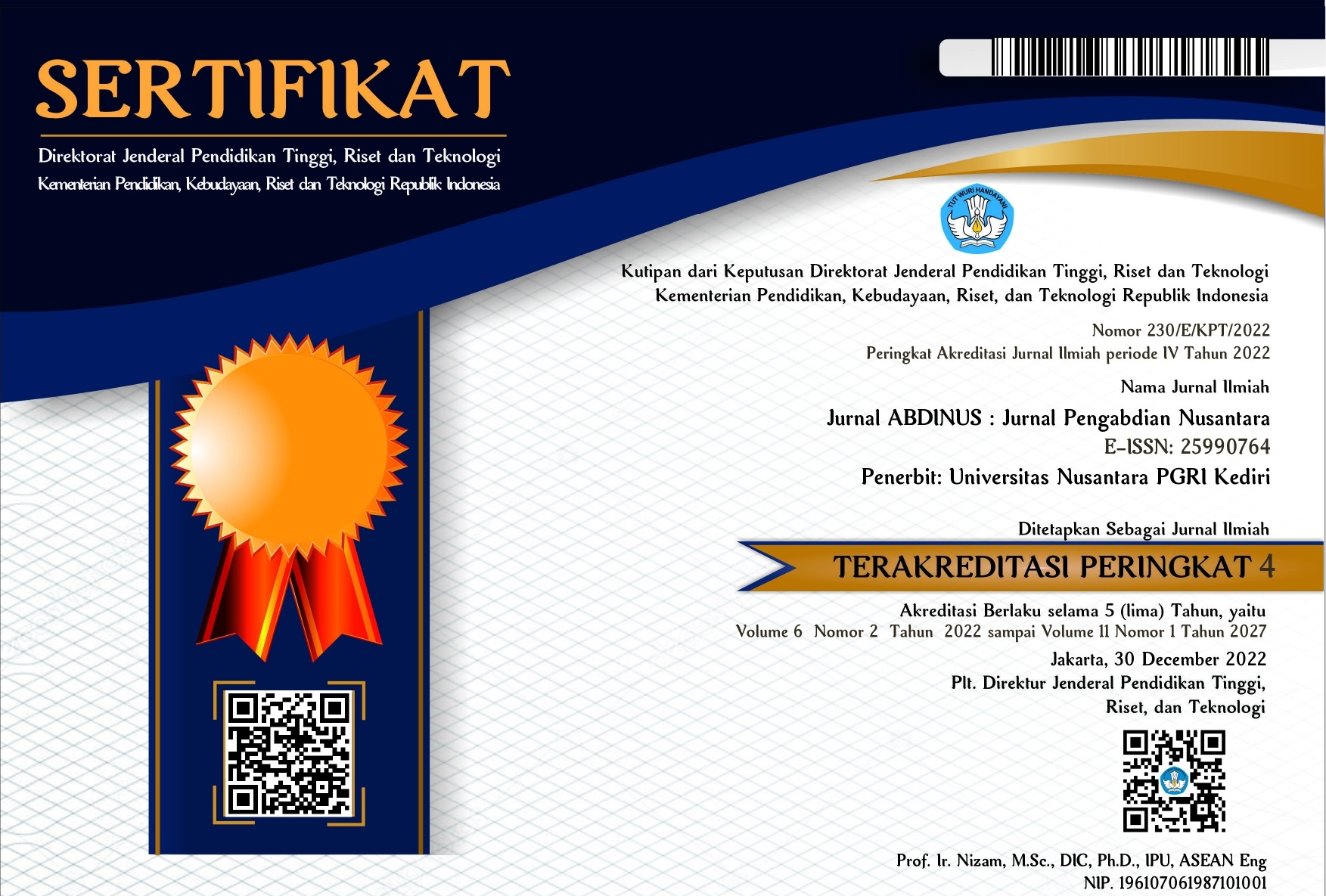Pelatihan Pembuatan Elemen Dekorasi Interior Berbahan Limbah Sendok Plastik di Desa Pongangan, Kecamatan Manyar, Gresik
DOI:
https://doi.org/10.29407/ja.v7i3.19994Keywords:
Waste plastic spoons, Interior DecorationAbstract
Disposable or single-use plastic spoons are a type of household waste often found because of their extensive use in food or snack packaging marketed in the culinary industry. Its contribution is very large to environmental damage because it is difficult for waste to decompose for hundreds or even thousands of years. To overcome this, the effort that can be made is to process plastic spoon waste into decorative products. Based on these conditions, this community service activity aims to introduce interior decoration products using waste plastic spoons. The methods of community service activities are counseling, discussion, and independent practice. This activity showed that the participants were enthusiastic during the training and interested in developing the results into decorative products with economic value. The participants who were housewives gained knowledge about the dangers of using plastic in food, as well as gained knowledge about crafts made from plastic spoon waste. This interior decoration training activity not only adds to the skills of homemakers, but mothers who have social activities outside the environment can socialize with other neighborhoods, villages, and communities.
Downloads
References
Ariani. (2016). Sendok Plastik Bekas Pakai sebagai Alternatif Elemen Estetis pada Produk. https://core.ac.uk/display/144967184?utm_source=pdf&utm_medium=banner&utm_campaign=pdf-decoration-v1
InSWA. (2021, December 5). Fenomena Sampah Plastik di Indonesia. https://inswa.or.id/fenomena-sampah-plastik-di-indonesia/
Madarina, A. (2020, May 6). Sendok Plastik Bisa Berbahaya bagi Kesehatan, Kurangi Penggunaannya. Sehatq.Com. https://www.sehatq.com/artikel/sendok-plastik-bisa-berbahaya-bagi-kesehatan-kurangi-penggunaannya
N N. (2022, February 25). Sampah Plastik: Bahayanya dan Apa Saja yang Bisa Kita Lakukan. https://yakult.co.id/berita/sampah-plastik-bahayanya-dan-apa-saja-yang-bisa-kita-lakukan-NDk=
Nabila, I. D. (2017). Pemanfaatan Limbah Sendok Plastik. E-Proceeding of Art & Design, 4(3), 1009–1028. https://openlibrary.telkomuniversity.ac.id/pustaka/files/137260/jurnal_eproc/pemanfaatan-limbah-sendok-plastik-untuk-diaplikasikan-pada-produk-perhiasan.pdf
Setyowati, V. A., Wahyu, E., & Widodo, R. (2017). Studi Sifat Fisis, Kimia, dan Morfologi pada Kemasan Makanan Berbahan Styrofoam dan LDPE (Low Density Polyethylene): Telaah Kepustakaan. https://doi.org/http://dx.doi.org/10.23960/mech.v8.i1.201706















